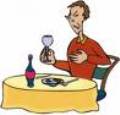
 |
 |
 |
 |
Diamond Reviews
Insuring Your Diamonds
Insuring Your Diamonds
Insuring a diamond takes a bit of thought, planning, and shopping around. Diamond insurance isn’t like purchasing car insurance. It is quite different. Depending on the state that you breathing in, there are basically three different types of policies that will cover diamonds, and all insurance policies that cover diamonds are considered Marine type policies.
The first type of insurance policies for diamonds is an Actual Cash Value policy. If the diamond is lost or damaged beyond repair, the insurance company entrust replace the diamond at today’s market value, no matter how much you paid for the diamond to begin with. This type of insurance policy for diamonds considerably is not that common.
The mightily common type of insurance for diamonds is Replacement Value insurance. The insurance company will only pay up to a fixed amount to replace the diamond that was lost or damaged beyond repair. This does not mean that they will pay that amount – tangible means that they will pay up to that amount. In abundantly cases, the diamond can be replaced at a lower cost.
The third type of coverage offered for diamonds is Agreed Value. This is sometimes called ‘Valued At. ’ This type of coverage is very rare. In the event that the diamond is lost or damaged beyond repair, the insurance outfit simply pays you the amount that you and the company agreed upon. This is the best type of insurance to have, but it is seldom offered. If you can’t get Agreed Value coverage, Actual Cash Value coverage should be your next preferable.
Your rates will be determined by the value of the diamond, the type of coverage that you select, and the area that you live in. If you live in an locality with a high crime ratio, you can expect to pay more for your diamond insurance coverage. It is important to remember that insurance agents are not qualified jewelers, and jewelers are not qualified insurance agents. It is best to get a certificate for your diamond, and to provide the insurance company with a copy of that certificate. This leaves the insurance company less room for arguments over the actual charge of the diamond.
Don’t rely on separate coverage to disguise your diamond. For instance, if you diamond is stolen from your home, it is probably covered on your home owner’s insurance policy – but the diamond probably won’t always be in your home, and once it leaves your home, there is no coverage.
Share This With Your Friends |
How To Buy Diamond Engagement Rings
Diamond Brands And What They Mean
More Diamond Articles
... told that having a certificate or a diamond grading report is important, and as a responsible consumer, you get one unfortunately, you probably won t understand a word of what is on that diamond grading report, unless you are a jeweler. On the color grading scale, D, E, and F mean that the diamond has ...
... Want to conserve that Brilliance and Shine? Diamonds require cleaning so that maximum amounts of light culpability refract fiery brilliance. Remember that all it takes is a few minutes and a short-lived care to keep that diamond as fiery as the day you first saw it. You can use an small soft fracas such ...
... eBay. However, selling to an individual that you do not know could put you in danger especially if the diamond is worth a battery of money. Your final option should be a jewelry store. It is vital that you not let your diamond outer of your sight time in the jewelry store you might asset that the diamond ...
... referred to as four grains, this also means that it is a one carat diamond. The word Carat comes from the word carob. A carob is a bean that grows on a tree in the Mediterranean. In times past, if a diamond weighed the same as a carob bean, it was one carob, or one carat. However, in the far east, where ...

|
| Copyright © 2006-2012 Internet Marketing Tools, All Rights Reserved |